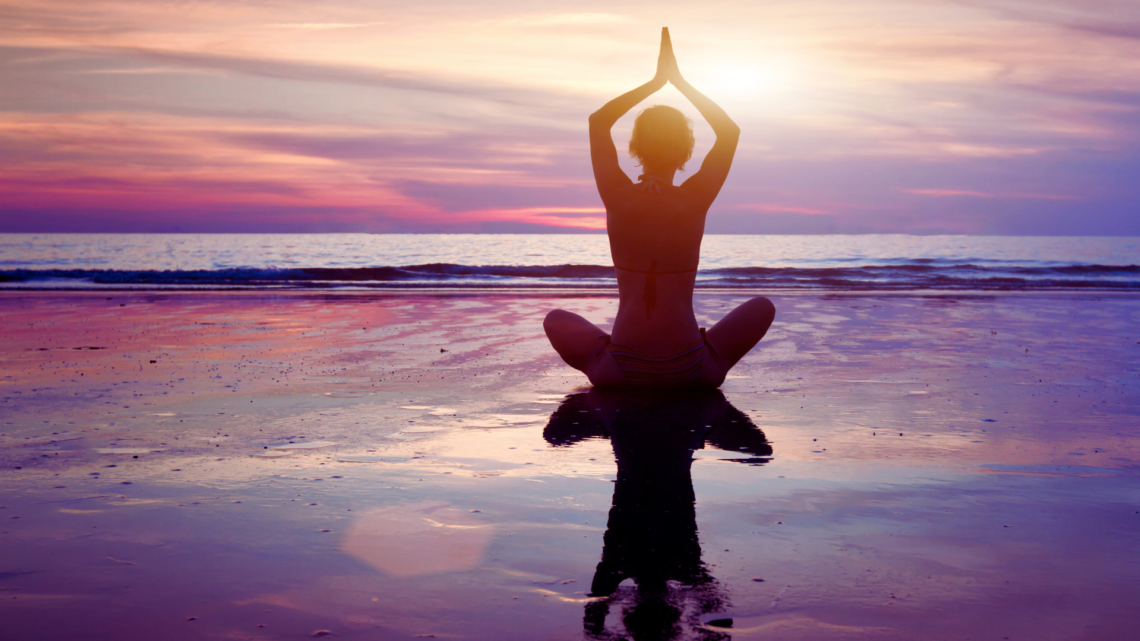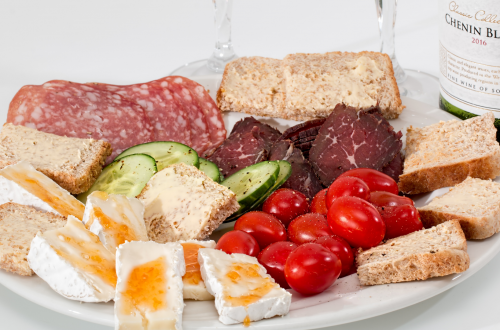
Benefits of Slow Living: Embracing a Balanced and Mindful Lifestyle
Slow living offers a lifestyle shift that emphasizes mindfulness and intentionality, allowing individuals to reconnect with what truly matters in their lives. Embracing slow living can lead to reduced stress levels, increased joy, and a deeper appreciation for everyday moments. By slowing down, people can cultivate a mindset that prioritizes quality over quantity, resulting in more meaningful relationships and experiences.
Many individuals find that adopting a slower pace fosters a sense of contentment that may be absent in a fast-paced world. This approach encourages him or her to focus on the present, savoring simple pleasures and finding joy in daily routines. The benefits of slow living extend beyond personal well-being, influencing overall lifestyle choices and promoting a more sustainable way of living.
As the movement gains traction, more individuals are turning to this mindset, discovering how it enhances their quality of life. In a society often driven by speed and productivity, slow living stands out as a refreshing alternative, proving that taking time to reflect and enjoy can lead to profound benefits.
Philosophy and Origin of Slow Living
Slow living emphasizes the importance of valuing time, simplicity, and mindful choices. It promotes a more intentional lifestyle that focuses on enjoying small pleasures and aligning daily actions with personal values.
Defining Slow Living and Its Core Principles
Slow living centers around the idea of embracing a more deliberate pace in life. It encourages individuals to prioritize quality over quantity, fostering a sense of mindfulness in everyday activities. Core principles include:
- Intentionality: Making conscious choices that reflect individual values.
- Connection: Fostering meaningful relationships with people, nature, and self.
- Simplicity: Reducing distractions to focus on what truly matters.
This philosophy values the joys found in everyday moments, urging individuals to slow down and appreciate life’s simple pleasures.
Historical Context: From the 1980s to Carlo Petrini and Carl Honoré
The slow movement began gaining traction in the 1980s as a response to fast-paced modern life. It sought to counter the prevailing culture of speed that characterized various aspects of society. Key milestones include:
- Carlo Petrini founded the Slow Food movement in 1986, advocating for local food production and sustainable practices.
- Carl Honoré later popularized the term “slow living” in his 2004 book, In Praise of Slowness, which explored the benefits of slowing down in different life areas.
These developments contributed to a broader cultural shift, emphasizing quality of life through conscious living decisions.
Influential Figures and Books: Brooke McAlary, Leo Babauta, and ‘In Praise of Slowness’
Various thinkers and authors have further popularized slow-living concepts. Brooke McAlary emphasizes embracing simplicity and intentionality through her writings and podcasts.
Leo Babauta, author of Zen Habits, advocates for a minimalist lifestyle that encourages reduced distractions, allowing individuals to focus on what matters.
In Praise of Slowness by Carl Honoré remains a defining work in the slow movement, illustrating how slowing down can enhance well-being across various domains, from work to leisure. These figures collectively promote a lifestyle centered on mindfulness and appreciating small joys.
Lifestyle Changes for Slow Living
Adopting a slow living approach involves making intentional lifestyle changes that enhance the quality of life and promote well-being. Key areas include minimalism, mindfulness practices, balanced technology use, and slow movements in food, fashion, and travel.
Adopting Minimalism and Simplifying Life
Minimalism encourages individuals to focus on quality over quantity. This lifestyle change involves decluttering physical spaces and removing non-essential items, creating a more serene environment.
By keeping only what is necessary, individuals can reduce stress and improve mental clarity. Practical steps include setting regular decluttering sessions and implementing the “one-in-one-out” rule for new purchases. This fosters a mindset that values experiences over possessions.
Additionally, simplifying life can extend to financial responsibilities. Reducing commitments and expenses allows for greater freedom and less anxiety about daily obligations.
Cultivating Mindfulness and Meditation Practices
Mindfulness involves being present in each moment, which significantly enhances daily living. Regular meditation practice aids in focusing thoughts and reducing distractions. Techniques such as deep breathing or guided imagery can help center the mind and cultivate inner peace.
Practicing mindfulness extends beyond meditation. Incorporating it into daily activities—like eating or walking—encourages a deeper connection to the present. This can lead to improved emotional regulation and a greater sense of fulfillment.
Creating a consistent routine for mindfulness practices can further deepen its impact, allowing individuals to experience reduced stress and increased overall well-being.
Balancing Technology and Reduced Screen Time
Technology plays a pivotal role in modern life but can also be a source of distraction. Limiting screen time helps cultivate a slower pace and a more mindful existence. Setting boundaries around device use—such as specific hours for checking email or social media—can alleviate digital overwhelm.
Engaging in non-digital activities encourages connection with the physical world. Hobbies such as reading, gardening, or crafting can provide a welcome break from screens.
By intentionally reducing technology use, individuals may find enhanced relationships and a greater focus on personal interests and self-care.
Integrating Slow Movements: Food, Fashion, and Travel
Slow movements emphasize conscious choices in food, fashion, and travel, promoting sustainability and enjoyment. The slow food movement encourages local ingredients and traditional preparation methods. This enhances not only personal health but also community connection and environmental impact.
In fashion, slow fashion prioritizes quality garments over fast trends, focusing on ethical production and sustainable materials. Consumers are encouraged to invest in timeless pieces that last rather than disposable items.
Slow travel emphasizes meaningful experiences over ticking off checklists. Opting for fewer destinations allows for deeper exploration and genuine cultural engagement, creating lasting memories.
The Impact of Slow Living
Slow living fosters a more conscious approach to daily habits, leading to significant benefits in health, relationships, creativity, and environmental awareness. By embracing a paced lifestyle, individuals can cultivate deeper connections and a more fulfilling existence.
Enhanced Physical and Mental Health
Engaging in slow living can significantly improve both physical and mental health. Individuals often experience reduced stress levels as they prioritize rest and mindfulness. This shift leads to improved sleep quality, lower blood pressure, and a stronger immune system.
Additionally, a slower pace allows for healthier eating habits. When people focus on preparing meals mindfully, they tend to choose whole, nutritious foods over processed options. This promotes better physical health and contributes to an individual’s mental clarity and emotional stability.
Strengthening Relationships and Community Connections
Slow living nurtures meaningful relationships by encouraging time spent with family and friends. Prioritizing moments together fosters deeper connections and enhances communication. Engaging in shared activities, such as cooking or outdoor exploration, creates lasting memories.
Furthermore, slow living nurtures a sense of community. By engaging locally, individuals strengthen ties with their neighbors and build supportive networks. This connection enhances feelings of belonging and togetherness, promoting overall well-being.
Promoting Sustainability and Environmental Stewardship
A commitment to slow living often aligns with sustainable practices. Individuals may become more mindful consumers, prioritizing quality over quantity. This conscientious approach reduces waste and minimizes environmental impact.
Moreover, slow living encourages a deeper appreciation for nature. Spending time outdoors enhances one’s connection to the environment. This emphasis on environmental stewardship fosters gratitude and a sense of responsibility for preserving natural resources.
Embracing Creativity and Joy in Everyday Activities
Slowing down opens the door for creativity to flourish. With less emphasis on productivity, individuals can explore hobbies and interests that bring them joy. This might include painting, gardening, or crafting, which enhances overall fulfillment.
Additionally, taking time to appreciate the small moments in life creates a greater sense of gratitude. Engaging in everyday activities, like savoring a cup of tea or taking a leisurely walk, fosters mindfulness and presence. This appreciation nurtures a joyful perspective, enriching daily experiences.
Practical Tips for Embracing Slow Living
Embracing a slower pace of life involves setting clear intentions, reducing commitments, and discovering fulfilling hobbies. These practical tips will help in cultivating a balanced and mindful lifestyle.
Setting Intentions for a Slower Pace of Life
Intentionality is key to creating a slower pace. Begin each day by setting specific intentions. This might include deciding to spend more time in nature or prioritizing moments for reflection.
- Daily Goals: Write down 1-3 goals that focus on quality over quantity.
- Mindfulness Practices: Incorporate meditation or deep breathing exercises into the morning routine.
Being deliberate in these choices allows for greater clarity and alignment with personal values. A clear intent nurtures deeper relationships and a more meaningful existence.
Reducing Commitments and Prioritizing Self-Care
Reducing commitments is essential for creating space in life. Assess current obligations and identify those that contribute positively to well-being.
- Evaluate Engagements: List commitments and prioritize those that offer joy or fulfillment.
- Saying No: Learn to say no to activities that detract from personal wellness.
Self-care practices should be integrated into the week. This could involve dedicated time for hobbies, reading, or simply resting. Prioritizing oneself enhances energy levels and overall happiness.
Discovering Hobbies and Activities for Restful Downtime
Exploring new hobbies can greatly enrich one’s downtime. Consider engaging in activities that promote relaxation and joy.
- Gardening or Homesteading: These activities foster a connection to nature and can provide a sense of accomplishment.
- Creative Outlets: Try painting, crafting, or cooking as a way to unwind and express creativity.
Traveling at a slower pace, such as taking short road trips, can also be rejuvenating. These experiences allow for deeper connections with places and people, creating lasting memories. Embracing restful activities aids in achieving a balanced life focused on wellness.



